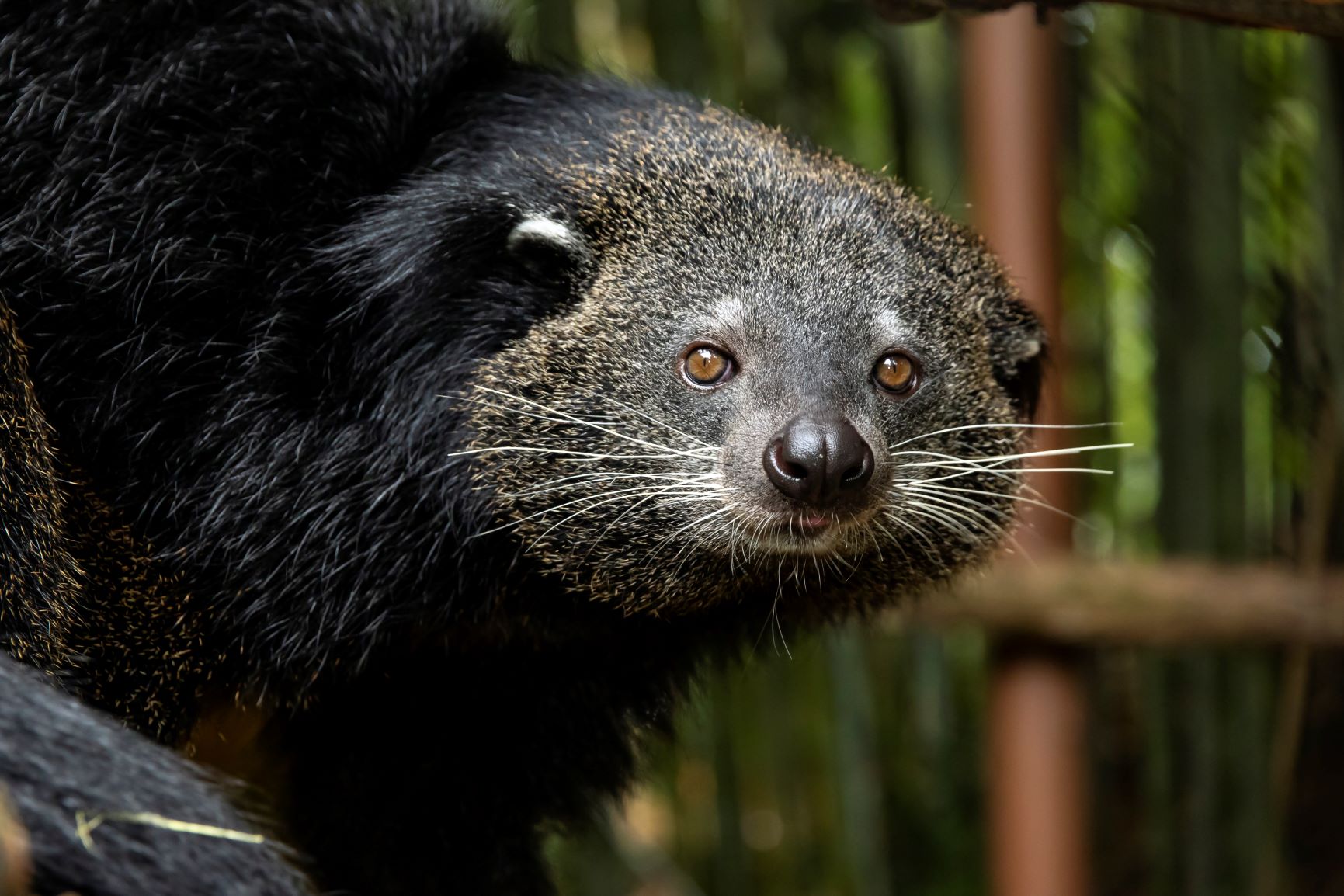Binturongs: The Adorable Mammals Known for Smelling Like Buttered Popcorn
Brooke Fortune
March 8, 2023
The Mysterious Binturong
Of the 200+ species at Zoo Atlanta, binturongs are among the least known. They are also called “bearcats” (although they are not cats) and originate from Southeast Asia.
A Signature Scent
Known for their distinct scent of buttered popcorn, scientists discovered the source of this scent originates from chemicals in binturong urine. They use urine to mark their territory and find mates, dragging their tails behind them to leave a scent trail.
The Science Behind the Scent
Researchers found 29 chemicals present in binturong urine, but the most consistent chemical in each sample was 2-acetyl-1-pyrroline (2-AP), the same chemical that forms in popcorn during the popping process. Bacteria and microorganisms on the binturong’s skin and gut react with the urine, producing the popcorn-like scent.
Bacteria and Scents
Bacteria is also responsible for the familiar Frito or corn chip scent on a dog’s paws. This scent is derived from the bacteria Pseudomonas and Proteus and is normal and healthy.
Meet Baloo and Bramble
Visit the Binturong Habitat at the Zoo and meet Baloo and Bramble, the two bearcats, and perhaps catch a whiff of their buttered popcorn scent.
Sources
- Hassiotis, C. (n.d.). Binturongs Smell Like Hot, Buttery Popcorn — Now We Know Why. How Stuff Works.
- Smith, R. A. (2016, April 13). Why Bearcats Smell Like Buttered Popcorn. Duke Today.
Binturongs are fascinating creatures belonging to the viverrid family, native to Southeast Asia. They are also known as bearcats because of their short, stout bodies and bushy tails. Binturongs are unique in many ways, but one of their most peculiar traits is that they emit a distinctive popcorn-like aroma.
Many people have wondered why binturongs have such a distinct odor, and the answer lies in their biology. Binturongs have a gland located near their anus that secretes a substance known as 2-acetyl-1-pyrroline (2-AP). This chemical compound is also found in popcorn and gives it its characteristic aroma.
Scientists are not entirely sure why binturongs produce 2-AP, but there are several theories. One possibility is that the odor serves as a way for binturongs to communicate with each other. Like other animals, binturongs use scent marking to establish territory and attract mates. It’s possible that the popcorn-like aroma is a way for binturongs to signal their presence to other animals and establish dominance in their territories.
Another theory is that the odor may help binturongs attract certain types of prey. Binturongs are omnivores and eat a variety of foods, including fruits, insects, and small mammals. Some researchers believe that the 2-AP scent may attract fruit-eating animals to the area, making it easier for binturongs to find food.
Regardless of its purpose, the popcorn-like scent is a unique and interesting characteristic of binturongs. It’s worth noting, however, that not all binturongs smell the same. The intensity of the odor can vary from one individual to another, and some binturongs may not emit much of a scent at all.
In addition to their distinctive aroma, binturongs are known for their playful nature and are often kept as pets in their native countries. However, this practice is illegal in many parts of the world, and binturongs are considered vulnerable due to habitat loss and hunting.
In conclusion, binturongs are fascinating creatures that have many unique characteristics. Their distinct popcorn-like smell is just one of the many intriguing qualities that make them so interesting. While the exact purpose of the odor is still unknown, it’s clear that binturongs are remarkable animals that deserve our attention and protection.


